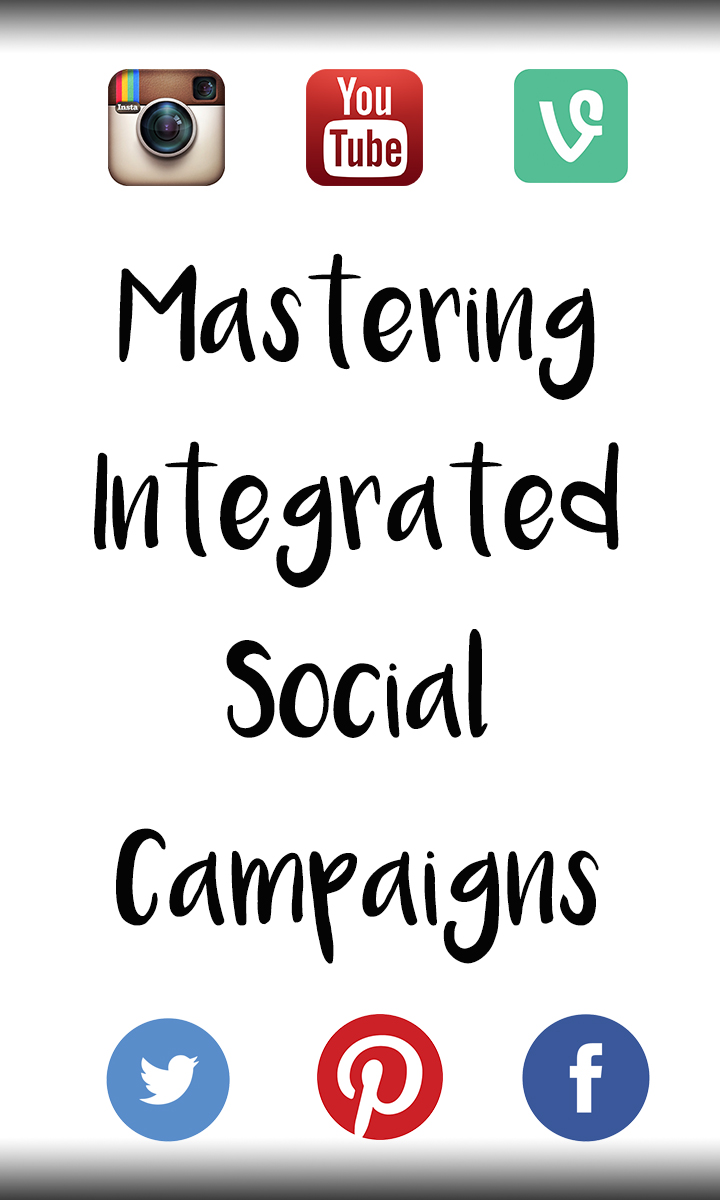
Each social platform has its own unique benefits, setbacks, and primary users. Integrating campaigns and content across social platforms helps fill in those gaps with features of another platform, all while helping your brand reach the widest market possible. Planning an Instagram campaign soon? Tie those images in with a Pinterest board theme and link them back to your Instagram. Teaming up with a Vine influencer to create a branded Vine video? Make sure that video gets shared or promoted on Twitter for an extra boost of awareness and engagement. Have a new video you’re hoping will go viral? Consider uploading it on Facebook and YouTube for extended reach. The following integrations explore ways you can boost views, engagement and shares with a multi-platform strategy.

Pinterest and Instagram
Pinterest and Instagram are two very visual platforms. They are also two very different platforms. Pinterest is the perfect place online to plan for your future. Instagram is great for sharing highlights from your life currently. So how can they support each other?
Let’s compare some complementing pros + cons:
Instagram: You can’t click through images, but great for brand awareness.
Pinterest: You can click through images to shop + buy.
Let’s compare some again:
Pinterest: It takes more time to keep up (~15 pins a day is ideal) and having enough inspirational content to share can be difficult.
Instagram: Instagram provides you with more inspirational content to share on Pinterest, helping boost engagement across both platforms.
Conclusion: Repurpose Instagram content on Pinterest. It will help boost engagement on both platforms, as the Pins will lead back to the brand’s Instagram account.

Facebook and YouTube
Let’s compare some complementing pros + cons:
Facebook: Facebook plays directly uploaded videos automatically in the feed.
YouTube: YouTube videos don’t play automatically when shared on Facebook.
Let’s compare some again:
Facebook: Great for sharing videos and for helping videos go viral.
YouTube: There are social sharing buttons, but there is no ‘re-YouTube’ button like with Vine. The alternative? Share YouTube across social platforms except Facebook.
Conclusion: A little different this time — If you create a video and want it to go viral, upload it on both YouTube and Facebook separately, instead of sharing a YouTube file directly on Facebook. When a video file is uploaded on Facebook, it will play automatically in the feed, leading to better reach and chance of virality.

Vine and Twitter
Vine and Twitter are two very complementary platforms, as Twitter now owns Vine. Integrating Twitter, a very text based platform, with Vine, a very visual platform, allows for better reach of Vine videos.
Let’s compare some complementing pros + cons:
Twitter: Hashtags on Twitter are the best way to reach new audiences and start trends. Twitter loops Vine videos automatically, helping boost engagement.
Vine: Vine videos don’t all typically have a hashtag, like Tweets usually do.
Let’s compare some again:
Twitter: Primary users are ages 18-29.
Vine: Primary users are teens.
Conclusion: Share Vine videos on Twitter – the one place they will loop automatically – for increased views, engagement and reach. If you’re hoping to connect with viewers with ages ranging from teens to late twenties, sharing Vine videos on Twitter can greatly help extend reach.
Have you tried integrating content across platforms? How was your experience? Comment below!
This article was syndicated from Business 2 Community: Mastering Integrated Social Media Campaigns
More Digital & Social articles from Business 2 Community:




